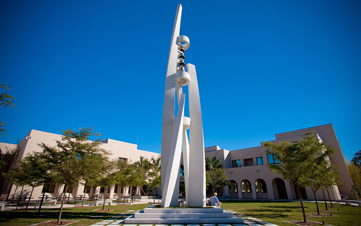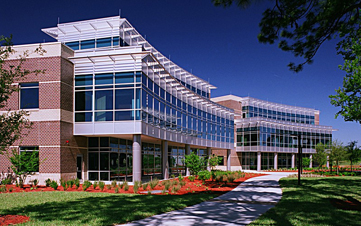10 Best Public Colleges, Lowest Debt at Graduation
As prices continue to outpace inflation at both public and private colleges, it\'s no surprise that two-thirds of college graduates end up borrowing to help pay for their college education.

As prices continue to outpace inflation at both public and private colleges, it\'s no surprise that two-thirds of college graduates end up borrowing to help pay for their college education. In 2011, student borrowers graduated with an average of $26,600 in student loans, according to the Project on Student Debt.
These ten schools from our 2013 list of best values in public colleges offer academic quality as well as enough financial support to help students earn their diploma while keeping student debt manageable. Four of the schools on our list get students to graduation day with an average debt of less than $15,000.

1. North Georgia College & State University
Avg. debt at graduation: $10,128
In-state rank: #96
Undergrad enrollment: 5,541
Annual in-state cost: $14,382
Annual out-of-state cost: $26,658
Students who borrow: 55%
Nestled in the Appalachian Mountains in Dahlonega, Ga., about an hour\'s drive north of Atlanta, North Georgia College & State University stands on what was once the U.S. Mint\'s Dahlonega location. The steeple of Price Memorial Hall is covered with gold leaf, harking to the town\'s gold-rush history.
The below-average cost of attendance ($14,382, compared with the $17,860 average for public colleges), as well as the generous HOPE scholarship available to in-state students, allow students to graduate with an average of only $10,128 in debt, less than half the national average and the lowest amount on our list.

2. California State University, Long Beach
Avg. debt at graduation: $12,401
In-state rank: #82
Undergrad enrollment: 29,287
Annual in-state cost: $19,688
Annual out-of-state cost: $30,848
Students who borrow: 42%
Only 30% of applicants are admitted to this campus, which is part of the California State University system, but more than half of those who attend receive need-based aid. Merit aid averages nearly $3,000, helping to reduce students\' need to borrow.
The school\'s 322-acre campus, located about 25 miles south of Los Angeles, overlooks the Pacific Ocean.

3. SUNY Oneonta
Avg. debt at graduation: $13,697
In-state rank: #59
Undergrad enrollment: 5,852
Annual in-state cost: $18,119
Annual out-of-state cost: $27,369
Students who borrow: 75%
SUNY Oneonta, located halfway between Albany and Binghamton, awards nearly $2.5 million in scholarships each year based on academic achievement. The awards range from $1,000 to $5,870.
While the percentage of students who take out loans is among the highest on our list of 100 public colleges, the average amount that each student owes at graduation--$13,697--is only about half the national average ($26,600).

4. New College of Florida
Avg. debt at graduation: $14,172
In-state rank: #7
Undergrad enrollment: 845
Annual in-state cost: $16,181
Annual out-of-state cost: $39,210
Students who borrow: 32%
This small college located in Sarasota, Fla., was founded as a private college in 1960 but joined the state university system in 1975. The school shares its campus with the University of South Florida.
Not only do 90% of New College students receive financial aid, but the average need-based aid brings the total cost for in-state students to a bargain $7,674. Only 32% of undergraduates take out student loans, the lowest percentage of student borrowers among our top 100 list.

5. SUNY Buffalo
Avg. debt at graduation: $16,010
In-state rank: #33
Undergrad enrollment: 19,334
Annual in-state cost: $20,333
Annual out-of-state cost: $30,953
Students who borrow: 45%
The largest school in the SUNY system, this research institution has several large merit-based scholarships for top-notch applicants and recently launched an initiative dedicated to helping students graduate on time.
The University at Buffalo\'s \"Finish in 4\" program aims to get students to do just that, avoiding the expense of an additional year. If a student takes the pledge and fulfills each of the commitments--including limiting work to 20 hours or less per week--and still doesn\'t graduate on time, the school will waive tuition and fees for any remaining coursework.

6. University of North Carolina at Asheville
Avg. debt at graduation: $16,252
In-state rank: #52
Undergrad enrollment: 3,814
Annual in-state cost: $14,450
Annual out-of-state cost: $28,272
Students who borrow: 53%
The University of North Carolina at Asheville keeps student borrowing to a minimum with a variety of scholarship and grant programs: An average need-based aid award of nearly $6,000 reduces the cost for in-staters to $8,521. The school attracts student scholars with its Laurels scholarships, which range from small awards to the full cost of attendance and can be renewed for all four years if students meet the requirements. It also offers an extensive list of departmental scholarships.

7. San Diego State University
Avg. debt at graduation: $16,400
In-state rank: #77
Undergrad enrollment: 26,371
Annual in-state cost: $21,845
Annual out-of-state cost: $33,005
Students who borrow: 44%
This Southern California-based research institution is the third-largest university in the state and among the most selective schools on our list of 100 public colleges, with only five schools more discerning. San Diego State University offers admission to one-third of applicants; roughly 50% of the students who attend receive financial aid. The average need-based aid reduces the cost to $12,645, for in-state students and to $23,805, for out-of-staters.

8. University of North Florida
Avg. debt at graduation: $16,572
In-state rank: #64
Undergrad enrollment: 14,363
Annual in-state cost: $15,625
Annual out-of-state cost: $30,084
Students who borrow: 43%
The University of North Florida keeps student indebtedness well below the national average, thanks to its expansive aid offerings. The school, which is located in Jacksonville, Fla., meets 89% of a student\'s demonstrated need–one of the highest percentages on our list–and provides almost $6,000, on average, in need-based financial aid. The university also has one of the lowest percentages of students who borrow (43%) of our top 100.

9. University of Texas at Dallas
Avg. debt at graduation: $16,813
In-state rank: #60
Undergrad enrollment: 11,760
Annual in-state cost: $21,842
Annual out-of-state cost: $39,516
Students who borrow: 36%
While colleges look to ease the pain of tuition increases, the University of Texas at Dallas, located about 20 minutes outside of downtown Dallas in Richardson, Tex., has already extended a promise to students.
The school\'s Guaranteed Tuition Plan locks in a student\'s tuition rate for four years. Under the plan, in-state students are also permitted to take classes beyond the traditional 15 credit hours at no additional cost.
Nearly half of UT Dallas students receive financial aid packages of some type: Need-based aid averages about $8,000 and is distributed to 35% of undergraduates. Non-need-based aid averages $8,600.

10. California State Polytechnic University, Pomona
Avg. debt at graduation: $16,815
In-state rank: #89
Undergrad enrollment: 19,399
Annual in-state cost: $19,738
Annual out-of-state cost: $30,898
Students who borrow: 36%
One of seven polytechnic universities in the country, Cal Poly Pomona is known for its learn-by-doing approach, which uses student enterprise programs such as the school\'s Farm Store to provide hands-on experience. The school awards generous financial aid packages to a large portion of the student body: More than half of undergraduates receive need-based aid, and the average package comes to $9,646.
The school\'s 1,438-acre campus is located about 30 miles east of Los Angeles, on what was once the ranch of W.K. Kellogg, of breakfast cereal fame.

Get Kiplinger Today newsletter — free
Profit and prosper with the best of Kiplinger's advice on investing, taxes, retirement, personal finance and much more. Delivered daily. Enter your email in the box and click Sign Me Up.

-
 6 Stunning Waterfront Homes for Sale Around the US
6 Stunning Waterfront Homes for Sale Around the USFrom private peninsulas to lakes, bayous and beyond, Kiplinger's "Listed" series brings you another selection of dream homes for sale on the waterfront.
By Charlotte Gorbold Published
-
 Six Reasons to Disinherit Someone and How to Do It
Six Reasons to Disinherit Someone and How to Do ItWhether you're navigating a second marriage, dealing with an estranged relative or leaving your assets to charity, there are reasons to disinherit someone. Here's how.
By Donna LeValley Published
-
 What to Do With Your Tax Refund: 6 Ways to Bring Growth
What to Do With Your Tax Refund: 6 Ways to Bring GrowthUse your 2024 tax refund to boost short-term or long-term financial goals by putting it in one of these six places.
By Rachael Green Published
-
 What Does Medicare Not Cover? Eight Things You Should Know
What Does Medicare Not Cover? Eight Things You Should KnowHealthy Living on a Budget Medicare Part A and Part B leave gaps in your healthcare coverage. But Medicare Advantage has problems, too.
By Donna LeValley Published
-
 15 Reasons You'll Regret an RV in Retirement
15 Reasons You'll Regret an RV in RetirementMaking Your Money Last Here's why you might regret an RV in retirement. RV-savvy retirees talk about the downsides of spending retirement in a motorhome, travel trailer, fifth wheel or other recreational vehicle.
By Bob Niedt Published
-
 The Six Best Places to Retire in New England
The Six Best Places to Retire in New Englandplaces to live Thinking about a move to New England for retirement? Here are the best places to land for quality of life, affordability and other criteria.
By Stacy Rapacon Last updated
-
 The 10 Cheapest Countries to Visit
The 10 Cheapest Countries to VisitWe find the 10 cheapest countries to visit around the world. Forget inflation woes, and set your sights on your next vacation.
By Quincy Williamson Last updated
-
 15 Ways to Prepare Your Home for Winter
15 Ways to Prepare Your Home for Winterhome There are many ways to prepare your home for winter, which will help keep you safe and warm and save on housing and utility costs.
By Donna LeValley Last updated
-
 Six Steps to Get Lower Car Insurance Rates
Six Steps to Get Lower Car Insurance Ratesinsurance Shopping around for auto insurance may not be your idea of fun, but comparing prices for a new policy every few years — or even more often — can pay off big.
By Donna LeValley Published
-
 How to Increase Credit Scores — Fast
How to Increase Credit Scores — FastHow to increase credit scores quickly, starting with paying down your credit card debt.
By Lisa Gerstner Last updated
